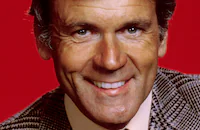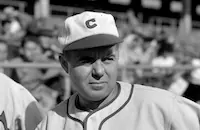License to Kill (1984) is a made-for-television movie that gets straight to the point of its subject matter. Name one person who hasn't been affected in some way by the repercussions of drunk driving, or one week's news cycle--local or national--that doesn't involve mention of a life cut short by alcohol. Driving while intoxicated was a major issue in 1984, and it remains an issue in 2019, but Jud Taylor's film brought the subject to American screens with an anger directed at those who try to get away with it.
When an ambitious high school graduate--the valedictorian with her sights set on Northwestern--is killed in a head-on collision by the gin-soaked owner of a construction company, the latter walks away unharmed and saddles himself with the best lawyer money can buy. The girl's family struggles to stay together in the aftershock: the mother, Judith (Penny Fuller), seeks solace in the church, while the father, John (James Farentino), seeks it in the courthouse, dead-set on getting justice for his daughter.
The film takes us to the other side, too. We listen to the guilty man lament that he'll lose everything: "It was an accident! Why should a guy have to give up his life, liberty and pursuit of happiness for something that wasn't even his fault?" he ponders, a vodka glass in hand. He's completely serious, too.
There's nothing truly remarkable nor particularly unforgettable about the film. It's not a technical marvel; rather, it's shot in a style typical of made-for-television movies, with flat lighting, standard shot composition and very little camera movement. Perhaps its most shocking moment arrives in the instant the two cars collide, freezing on a blurred motion of the girl in mid-scream, as the sound of the tires squealing, chrome crumpling and glass crunching roars underneath. It's a haunting shot that adds dramatic flair to the film.
What will keep this film on radars is the performance of one of its supporting actors, a young Denzel Washington. Despite having a fairly low-key role as the prosecutor (he arrives about 40 minutes into the film), he manages to lend his lines the electrifying gravitas and sharpened delivery that would define his career. Other performances of note include that of TV actor Don Murray as the drunk driver--there's something about his expressions that are just strangely magnifying--and Donald Moffat.
License to Kill is dated and at its at its weakest when using its piano-heavy soundtrack that lacks true emotion, but it's at its best when it allows silence to carry the weight of the characters' grief. We don't need the musical cues, and the film's strength comes when it keeps those at bay. The film drives home its message with the battering-ram directness of a PSA made for a driver's ed class, and we can only hope that it helped to turn someone's life around or helped someone work through a similar tragedy. But the unfortunate fact is that License to Kill (1984) still remains all too relevant to this day.
By Thomas Davant
License to Kill
Brief Synopsis
Read More
In this companion piece of sorts to "M.A.D.D.: Mothers Against Drunk Drivers," James Farentino and Penny Fuller are a married couple whose college-bound daughter is killed in an automobile accident with a drunk driver (Don Murray), who had a few drinks too many with his country club cronies.
Cast & Crew
Read More
Jud Taylor
Director
George Martin
Millie Perkins
Niki Flacks
Kenneth Barry
Ari Meyers
Film Details
Genre
Drama
Release Date
1984
Technical Specs
Duration
2h
Synopsis
In this companion piece of sorts to "M.A.D.D.: Mothers Against Drunk Drivers," James Farentino and Penny Fuller are a married couple whose college-bound daughter is killed in an automobile accident with a drunk driver (Don Murray), who had a few drinks too many with his country club cronies.
Director
Jud Taylor
Director
Cast
George Martin
Millie Perkins
Niki Flacks
Kenneth Barry
Ari Meyers
Vernon Grote
Jacqueline Brookes
Joe Rainer
Penny Fuller
Jerry Haynes
Donald Moffat

Don Murray
Howard Fisher

Denzel Washington
Kristen Vigard

Ray Walker
Lawrence Montaigne
John Jackson
Hugh Gorrian
Bob Hibbard
Michele Rusheene
James Farentino
Marc Gilpin
Karen Radcliffe
Chris Bradley
Brandon Smith
Crew
Bruce Bell
Sound Effects Editor
Jack Bennett
Special Effects
Barbara Blanchette
Extras Agent/Coordinator
Else Blangsted
Music Editor
Tony Brand
Assistant Director
Don Broughton
Boom Operator
Jerry G Callaway
Camera Operator
Terry Cashman
Song
Bonnie Clevering
Hair Stylist
Mary Colquhon
Casting
John Colwell
Assistant Director
Robert Cornett
Sound Editor
Jim Croce
Song
Jim Croce
Song Performer
Suzanne Dooley
Production Assistant
Robert A Driskell
Gaffer
Ron Ferguson
Camera Assistant
Randy Fife
Stunt Coordinator
Kate Forte
Assistant
Scott Grusin
Music Editor
Cate Harman-roach
Script Supervisor
Anne Hopkins
Associate Producer
Bob Huddleston
Production Manager
Robert C. Jessup
Director Of Photography
Steven Kemper
Assistant Editor
Rody Kent
Location Casting
Paul Lamastra
Editor
Janet Lawler
Costume Designer
Lynn Lockwood
Camera Assistant
Terri Martin
Production Assistant
Jack Marty
Art Director
Elizabeth Mcbride
Costume Designer
Gene Miller
Production Accountant
Alvin Milliken
Transportation Captain
Maggie Netter
Production Coordinator
Mike Parsons
Property Master
Dorothea G Petrie
Producer
Jacki Phipps
Location Manager
Chaim Plewinski
Production Assistant
Tony Poston
Key Grip
Marian Rees
Executive Producer
Laurence Rosenthal
Music
William A Schwartz
Screenplay
Floyd V Smith
Assistant Property Master
Robert Allan Wald
Sound Mixer
Tommy West
Song
Jimi White
Makeup
Film Details
Genre
Drama
Release Date
1984
Technical Specs
Duration
2h
Articles
License to Kill (1984) -

License to Kill (1984) -
License to Kill (1984) is a made-for-television movie that gets straight to the point of its subject matter. Name one person who hasn't been affected in some way by the repercussions of drunk driving, or one week's news cycle--local or national--that doesn't involve mention of a life cut short by alcohol. Driving while intoxicated was a major issue in 1984, and it remains an issue in 2019, but Jud Taylor's film brought the subject to American screens with an anger directed at those who try to get away with it.
When an ambitious high school graduate--the valedictorian with her sights set on Northwestern--is killed in a head-on collision by the gin-soaked owner of a construction company, the latter walks away unharmed and saddles himself with the best lawyer money can buy. The girl's family struggles to stay together in the aftershock: the mother, Judith (Penny Fuller), seeks solace in the church, while the father, John (James Farentino), seeks it in the courthouse, dead-set on getting justice for his daughter.
The film takes us to the other side, too. We listen to the guilty man lament that he'll lose everything: "It was an accident! Why should a guy have to give up his life, liberty and pursuit of happiness for something that wasn't even his fault?" he ponders, a vodka glass in hand. He's completely serious, too.
There's nothing truly remarkable nor particularly unforgettable about the film. It's not a technical marvel; rather, it's shot in a style typical of made-for-television movies, with flat lighting, standard shot composition and very little camera movement. Perhaps its most shocking moment arrives in the instant the two cars collide, freezing on a blurred motion of the girl in mid-scream, as the sound of the tires squealing, chrome crumpling and glass crunching roars underneath. It's a haunting shot that adds dramatic flair to the film.
What will keep this film on radars is the performance of one of its supporting actors, a young Denzel Washington. Despite having a fairly low-key role as the prosecutor (he arrives about 40 minutes into the film), he manages to lend his lines the electrifying gravitas and sharpened delivery that would define his career. Other performances of note include that of TV actor Don Murray as the drunk driver--there's something about his expressions that are just strangely magnifying--and Donald Moffat.
License to Kill is dated and at its at its weakest when using its piano-heavy soundtrack that lacks true emotion, but it's at its best when it allows silence to carry the weight of the characters' grief. We don't need the musical cues, and the film's strength comes when it keeps those at bay. The film drives home its message with the battering-ram directness of a PSA made for a driver's ed class, and we can only hope that it helped to turn someone's life around or helped someone work through a similar tragedy. But the unfortunate fact is that License to Kill (1984) still remains all too relevant to this day.
By Thomas Davant
License to Kill
Drug lord Franz Sanchez exacts his brutal vengeance on Felix Leiter, the recently married friend James Bond (Agent 007). In defiant response, Bond resigns from the British Secret Service and begins a fierce vendetta against the master criminal. Bond won't be satisfied until Sanchez is defeated, and to accomplish this aim he allies himself with a beautiful pilot and Sanchez's sexy girlfriend. But Bond, relegated to outlaw status, must battle agents on both sides of the law as he discovers the horrifying extent of his prey's resources. In order to bring Sanchez down, Bond must survive a ferocious boat chase, a mid-air brawl over the landing gear of an out-of-control airplane, and a dramatic confrontation in the Mexican desert.
License to Kill
Drug lord Franz Sanchez exacts his brutal vengeance on Felix Leiter, the recently married friend James Bond (Agent 007). In defiant response, Bond resigns from the British Secret Service and begins a fierce vendetta against the master criminal. Bond won't be satisfied until Sanchez is defeated, and to accomplish this aim he allies himself with a beautiful pilot and Sanchez's sexy girlfriend. But Bond, relegated to outlaw status, must battle agents on both sides of the law as he discovers the horrifying extent of his prey's resources. In order to bring Sanchez down, Bond must survive a ferocious boat chase, a mid-air brawl over the landing gear of an out-of-control airplane, and a dramatic confrontation in the Mexican desert.
Quotes
Trivia
Miscellaneous Notes
Aired in United States January 10, 1984













